Featured Articles
The Boys of November: The Bowe-Holyfield Trilogy
When most people think of November, they think of Thanksgiving. During the 1990s, the next-to-last month of the calendar year came to mean something else to fight fans, a reason in triplicate to give thanks for a heavyweight trilogy that ranks just below the Holy Trinity that was Muhammad Ali-Joe Frazier.
Yes, Riddick Bowe vs. Evander Holyfield was that exhilarating, that special. Oh, there have been other notable ring trilogies since then – Arturo Gatti-Micky Ward comes to mind – but in terms of the elite quality of the participants, and the fierce, unrelenting competitiveness of all three bouts, Bowe-Holyfield was a smorgasbord of pugilistic delights that, as much as anything, is the cornerstone of each champion’s professional legacy.
Remember, then, what was and hope that the heavyweight division someday soon can offer up more of the same superb stuff involving big men possessed of the same level of talent, heart and willingness to lay it all on the line.
*November 13, 1992, the Thomas & Mack Center, Las Vegas: In a spirited scrap that earned Fight of the Year recognition from The Ring magazine, despite the relatively wide scores (117-110 twice, 115-112 for the winner), Bowe came away with the unanimous decision and Holyfield’s lineal, WBA, WBC and IBF titles.
*November 6, 1993, Caesars Palace, Las Vegas: Whether the unexpected, out-of-the-sky appearance of paraglider James Miller, who came to be known as “Fan Man,” affected the outcome – there was a 20-minute delay in the seventh round to extract and remove Miller, who became ensnarled in the ring ropes – will forever be a matter of conjecture. When the bout resumed, Holyfield took charge down the stretch to eke out a 12-round majority decisions (115-113, 115-114, 114-114) and reclaim the WBA and IBF belts.
*November 4, 1995, Caesars Palace, Las Vegas: No widely recognized world title was on the line, and there was creeping suspicion that neither the 33-year-old Holyfield nor the 29-year-old Bowe was at their peak, but remember, the same was said of Ali and Frazier prior to the third act of their ongoing passion play, the “Thrilla in Manila.” Squaring off for pride and the so-called “People’s Championship” in their rubber match, Bowe – who went into the eighth round trailing, 66-65, on all three official cards – promptly floored Holyfield twice, prompting referee Joe Cortez to step in and award him the technical knockout victory.
It can be argued that Holyfield and Bowe weren’t the two finest heavyweights of the division’s most recent “golden era,” sharing as they did top billing with Lennox Lewis and Mike Tyson, but it is beyond dispute that, together, they made magic on three occasions. And maybe that is enough to gain additional consideration when it is time to put together any kind of best-of-the-best pecking order.
“Bowe brings out the best in me, and I think I bring out the best in him,” Holyfield said before their third fight. “We bring out the best in each other.”
With Act III approaching, someone asked Bowe if, were the bout to end in a draw, a fourth matchup might be in the offing.
“Last year I felt a little out of place when November rolled around because I had gotten so accustomed to fighting Evander Holyfield at that time,” Bowe said. “Me and Evander beating up on each other in November has become, you know, sort of habit-forming.
“And as far as a fourth fight between us … man, I don’t even want to think about (what would happen if there were) a draw. As hard as Evander Holyfield fights, if this one is a draw, he can fight the next one by himself.”
Although the more anxiously anticipated pairing no doubt involved Holyfield and Tyson, that megafight was delayed for five years, the result of, first, a thumb injury to Tyson that forced the cancellation of their scheduled bout in November 1991 and then Tyson’s rape conviction that landed him in prison for three-plus years. The post-incarceration Tyson was a pale imitation of his ferocious youth, and in his two meetings with Holyfield, he was knocked out in 11 rounds on Nov. 9, 1996 – another historic date in November — and then was disqualified for chewing off a piece of Evander’s right ear in the infamous “Bite Fight” of June 28, 1997.
With Tyson unavailable, it was almost inevitable that Holyfield and Bowe gravitate toward each other. Then again, a fight between them probably was bound to happen in any case. They had a shared history long before they squared off for anything of consequence, having been frequent sparring partners in the mid-1980s, when Evander was a young pro who hadn’t yet won his first world title and Bowe was a teenage amateur phenomenon.
“I realized at the time that we might wind up fighting someday,” Holyfield said in August 1992, after the contracts for their first bout were signed. “He wasn’t that much younger than me, and he was very gifted. I knew he wasn’t going to sit around and wait for me to get out of boxing before he made his move.
“I don’t think our situation is that unusual. Ali and Larry Holmes sparred when Ali was on top and Larry was coming up. I think maybe they knew they were going to fight for real one day. The guy who’s your sparring partner today might be your opponent tomorrow.”
Truth be told, Holyfield might have made the mistake of still thinking of Bowe – who had something of a reputation, and deservedly so, of a talented slacker who ate too much and trained too little – as that sparring partner of a decade earlier. His failure to push himself to peak efficiency, as he so frequently had and would do so in the future, might have cost him his titles.
“You couldn’t get him to do anything,” Holyfield’s trainer, George Benton, said of “The Real Deal’s” uninspired preparation for the first Bowe bout. “Some days he refused to work at all. Every day he had a different ache or pain.”
For his part, Bowe, who had a penchant for dramatic weight increases between fights, had given Team Holyfield at least a little reason to be confident. He had come in at a then-career-high 245 pounds for his most recent ring appearance, a seventh-round stoppage of Pierre Coetzer. Taking a poke at the soft midsection Bowe displayed that night, Lou Duva, Holyfield’s co-manager, presented the challenger with a pair of fancy, size-42 trunks at an August media gathering in New York. Bowe’s trunks had split down the back against Coetzer, revealing more of himself to an HBO audience then he would have preferred.
“Either your trunks are too small or you butt is too big,” Duva chided Bowe. “With these on, at least you’ll look good when they carry you out of the ring.”
But Bowe came in fit and ready, and when it became apparent that he would be no soft touch for the favored champion, the toughest, most resilient part of Holyfield’s inner self was activated. Bowe jolted Holyfield with a right uppercut early in the 10th round and seemingly was poised to score a knockout, but the exhausted Holyfield, after going down along the ropes, rose and fought back with a fury.
Color analyst Al Bernstein shouted to the pay-per-view audience, “That was one of the greatest rounds in heavyweight history! Ever! Period!” Boxing historian Bert Sugar later would compare that round to Round 15 of the Larry Holmes-Ken Norton war, Round 14 of Ali-Frazier III and Round 1 of Jack Dempsey-Luis Firpo, which featured seven knockdowns by Dempsey and two by Firpo.
Act II, of course, is especially notable not only for more of the kind of action that had marked Act I, but for Fan Man’s drop-in from the night sky and the tumult that set off. There probably always will be debate as to what would have happened had there not been a delay, which some believe benefited Holyfield and others feel was of assistance to Bowe, had had gone into training at around 300 pounds before paring down to an weigh-in weight of 246.
“I felt at that particular point that I had Evander right where I wanted him,” Bowe said. “I had the impression his back was giving him trouble. I felt that if the fight had continued, he would have quit.
“Then, when I saw what happened with my wife (Judy, who was pregnant, fainted and had to be carried out on a stretcher), I considered leaving the ring. I didn’t know what was going on. I was bewildered. But I knew enough to understand that if I left, they would have said I was quitting. So I waited until the fight resumed and tried to pick up where I left off. But by then I had gotten cold. I never did get warm again, and that’s what cost me my title. Holyfield didn’t beat me; Fan Man did.”
Holyfield, not unexpectedly, had a different take on what had transpired.
“Bowe and I fought two different six-round fights tonight,” he said shortly after his majority decision victory was announced. “In the first one, I was just getting ready to go toe-to-toe with him when that guy dropped in. I was in a rhythm, and I felt like I could outgun him. I started to get upset (during the delay), but then I realized it was the same for both of us. With that cleared from my mind, I just went out and got my rhythm back.”
The only certainty is that “Fan Man” – Miller, who would commit suicide, hanging himself from a tree in a remote part of Alaska in 2002 – is the one who came out the worst for wear. Intending to land in the middle of the ring, his chute became tangled in the overhead lights, causing him to land on the top strand of ropes, after which he tumbled awkwardly into a group of startled spectators. It spoke much as to the jinxed nature of Miller’s life that the ringside seats he toppled into were filled by Minister Louis Farrakhan and his Nation of Islam security detail, who were none too pleased to have an unidentified white guy unexpectedly arrive in their midst. The intruder was beaten unconscious by big, burly dudes brandishing walkie-talkies as makeshift clubs.
“It was a heavyweight fight,” a well-bruised Miller said afterward, “and I was the only guy who got knocked out.”
Fast-forward to Act III, which was to have shared the TV and local Las Vegas audience with another high-profile boxing event, Mike Tyson’s bout with Buster Mathis Jr., scheduled to take place on the same night just down the Strip at the MGM Grand. But that bout was postponed a few days earlier because of a fractured thumb on Tyson’s right hand. It eventually took place the following month, on Dec. 16 in Philadelphia, with Tyson winning on a third-round knockout. Not that Holyfield was overly concerned about what a rusted Iron Mike, whose only fight after leaving prison was a first-round disqualification win over the oafish Peter McNeeley on Aug. 19, 1995, was up to.
“At my best, I am the best,” Holyfield said. “Everybody in boxing is supposed to have that `champion’ attitude, which means that you fight the best to prove you’re the best. There was not one day when I was the champion of the world that I didn’t want to prove I was the best. The way I look at it, Bowe and I are the best heavyweights out there.
“Who is Mike Tyson in this day and era? He’s not the same champion he was when he was 20, 21 years old. That’s in the past. If you talk about who the best fighters are today, that’s Bowe and myself. We’re going to get it on. If Tyson wants to fight one of us, fine. But I can’t see why everyone puts so much (emphasis) on someone who has fought only once in four years.”
Muhammad Ali’s biographer, Thomas Hauser, once noted that Ali and Frazier “were fighting for something more important than the heavyweight championship of the world” in the Thrilla in Manila. “They were fighting for the championship of one another.” And so, in a way, were Holyfield and Bowe in the final act of their remarkable rivalry.
Holyfield held the early edge in another humdinger of a battle, knocking Bowe down for the first time in the younger, larger man’s career in the sixth round, and he seemed to be in control when momentum took a sudden turn only seconds into Round 8. An overhand right dropped Holyfield, hard, and he arose at the count of nine on unsteady legs. That drew a long look from referee Joe Cortez, who signaled the fighters to come forward and engage. Making the most of his opportunity to close the show, Bowe delivered a pair of rights to the head that sent Holyfield to his knees and obliged Cortez to wave a halt to the proceedings.
“When he stayed down for that long of a time (after the first knockdown), I knew I would get him,” said Bowe, who went off as a 3-1 favorite. “I knew, if I maintained my composure, I would get him.”
There would be more exclamation-point moments for Holyfield, who would go on to fight for nearly 16 more years and win a version of the heavyweight championship twice more, giving him a record four division titles, the most obvious successes being his pair of conquests of Tyson. Bowe, despite posting a final record of 43-1 with 33 KOs, would not fare as well in his professional dotage. He was badly beaten up in his two bouts with the “Foul Pole,” Andrew Golota, who still found a way to screw things up en route to bookend DQ losses for repeated low blows. Eight years after the second “victory” over Golota, Bowe made a comeback in 2004, winning three bouts against third-tier opponents, the last of which, at 40, was an eight-round unanimous decision over someone named Gene Pukall on Dec. 13, 2008.
The lives of the Boys of November have been marked by disappointment and turmoil outside the ropes. Holyfield, for so long perceived as boxing’s St. George equivalent, a knight in shining armor who dashed around the countryside slaying dragons and righting wrongs, endured three divorces and the embarrassment of foreclosure on his 109-room mansion in Fairburn, Ga. Bowe, a two-time champion, has had an even rockier time of it. He was served 30 days in prison after pleading guilty to a domestic violence charge, which was part of a plea bargain involving the kidnapping of his first wife, Judy (who later divorced him) and the couple’s five children; arrested for assaulting his second wife, Terri, and he washed out of Marine Corps boot camp after only three days of actual training.
As Joe Louis and Mike Tyson demonstrated, as have so many other former champs, fame does not necessarily evaporate like morning dew, but wealth (Holyfield earned an estimated $250 million in purses) can and does. It’s difficult to climb that figurative mountain, but even more difficult to remain at its summit.
No matter what, though, Holyfield and Bowe gave us three electrifying nights for the ages. For that, fight fans should forever be grateful.
-

 Featured Articles3 weeks ago
Featured Articles3 weeks agoThe Hauser Report: Zayas-Garcia, Pacquiao, Usyk, and the NYSAC
-
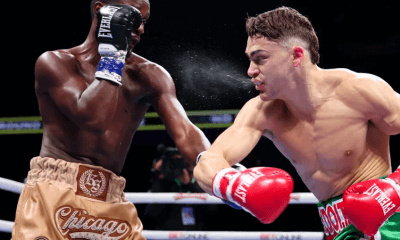
 Featured Articles2 weeks ago
Featured Articles2 weeks agoOscar Duarte and Regis Prograis Prevail on an Action-Packed Fight Card in Chicago
-
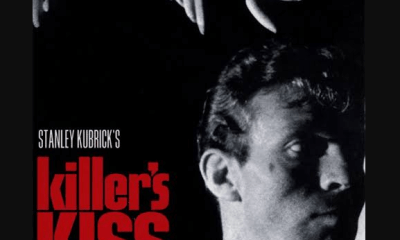
 Featured Articles1 week ago
Featured Articles1 week agoThe Hauser Report: Cinematic and Literary Notes
-
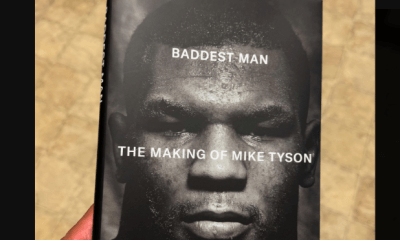
 Book Review5 days ago
Book Review5 days agoMark Kriegel’s New Book About Mike Tyson is a Must-Read
-
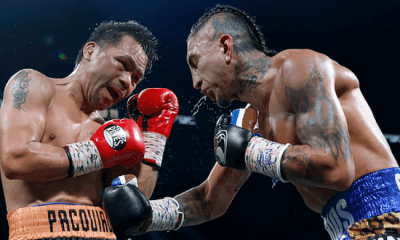
 Featured Articles4 weeks ago
Featured Articles4 weeks agoManny Pacquiao and Mario Barrios Fight to a Draw; Fundora stops Tim Tszyu
-
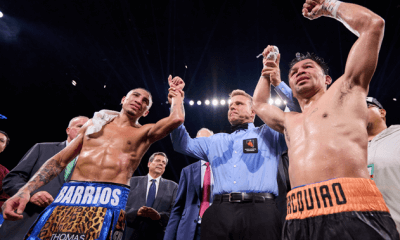
 Featured Articles4 weeks ago
Featured Articles4 weeks agoArne’s Almanac: Pacquiao-Barrios Redux
-

 Featured Articles3 weeks ago
Featured Articles3 weeks agoRemembering Dwight Muhammad Qawi (1953-2025) and his Triumphant Return to Prison
-
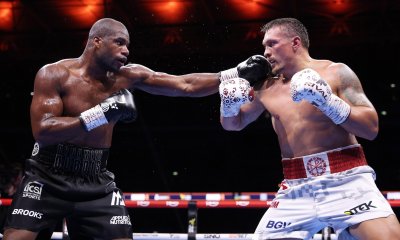
 Featured Articles4 weeks ago
Featured Articles4 weeks agoOleksandr Usyk Continues to Amaze; KOs Daniel Dubois in 5 One-Sided Rounds















